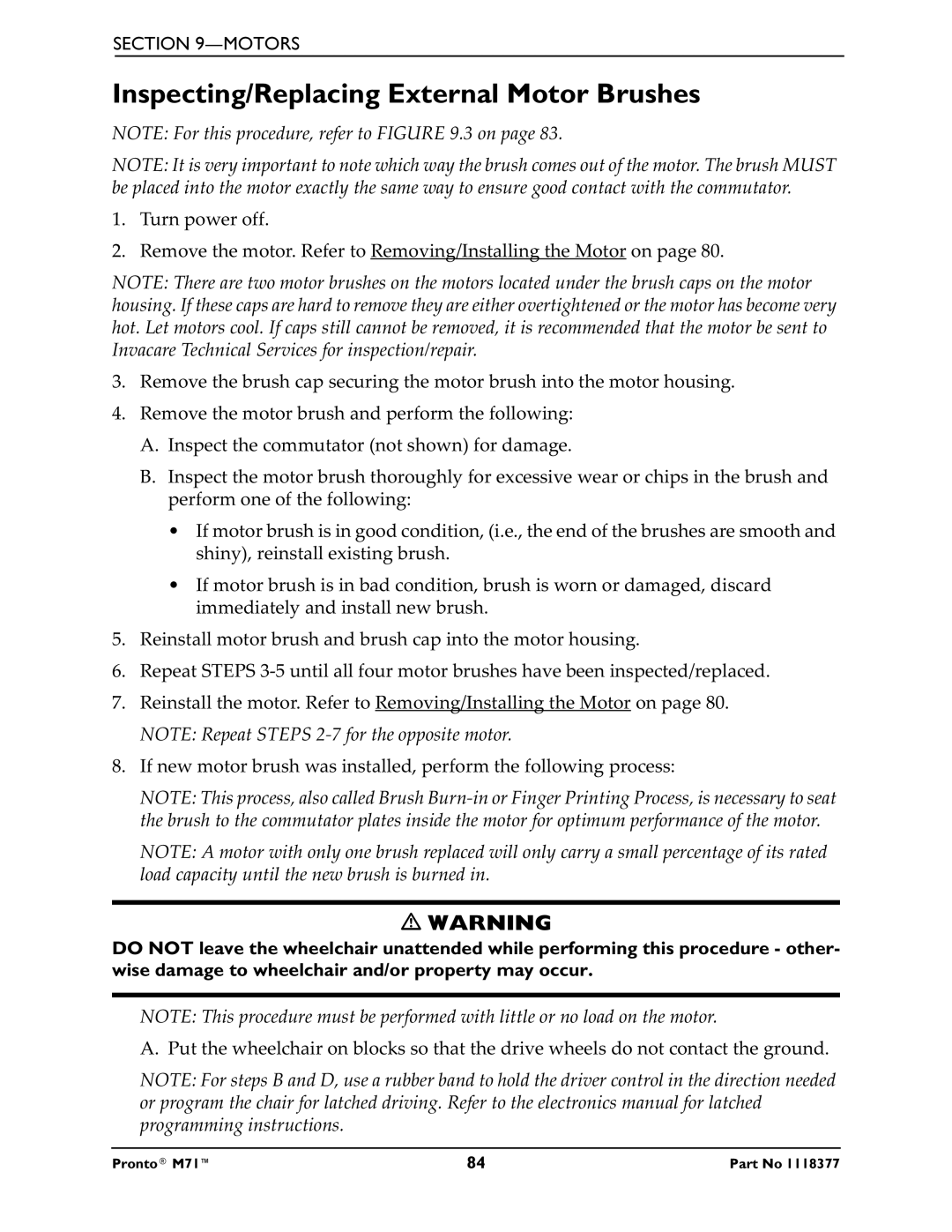
SECTION 9—MOTORS
Inspecting/Replacing External Motor Brushes
NOTE: For this procedure, refer to FIGURE 9.3 on page 83.
NOTE: It is very important to note which way the brush comes out of the motor. The brush MUST be placed into the motor exactly the same way to ensure good contact with the commutator.
1.Turn power off.
2.Remove the motor. Refer to Removing/Installing the Motor on page 80.
NOTE: There are two motor brushes on the motors located under the brush caps on the motor housing. If these caps are hard to remove they are either overtightened or the motor has become very hot. Let motors cool. If caps still cannot be removed, it is recommended that the motor be sent to Invacare Technical Services for inspection/repair.
3.Remove the brush cap securing the motor brush into the motor housing.
4.Remove the motor brush and perform the following:
A.Inspect the commutator (not shown) for damage.
B.Inspect the motor brush thoroughly for excessive wear or chips in the brush and perform one of the following:
•If motor brush is in good condition, (i.e., the end of the brushes are smooth and shiny), reinstall existing brush.
•If motor brush is in bad condition, brush is worn or damaged, discard immediately and install new brush.
5.Reinstall motor brush and brush cap into the motor housing.
6.Repeat STEPS
7.Reinstall the motor. Refer to Removing/Installing the Motor on page 80. NOTE: Repeat STEPS
8.If new motor brush was installed, perform the following process:
NOTE: This process, also called Brush
NOTE: A motor with only one brush replaced will only carry a small percentage of its rated load capacity until the new brush is burned in.
WARNING
DO NOT leave the wheelchair unattended while performing this procedure - other- wise damage to wheelchair and/or property may occur.
NOTE: This procedure must be performed with little or no load on the motor.
A. Put the wheelchair on blocks so that the drive wheels do not contact the ground.
NOTE: For steps B and D, use a rubber band to hold the driver control in the direction needed or program the chair for latched driving. Refer to the electronics manual for latched programming instructions.
Pronto® M71™ | 84 | Part No 1118377 |
